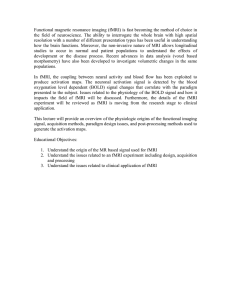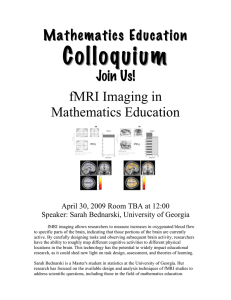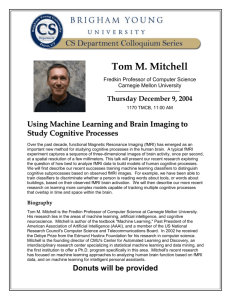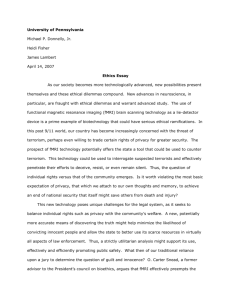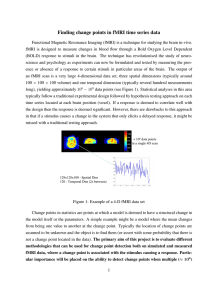Matías M. Pulópulos, PhD Student.
advertisement
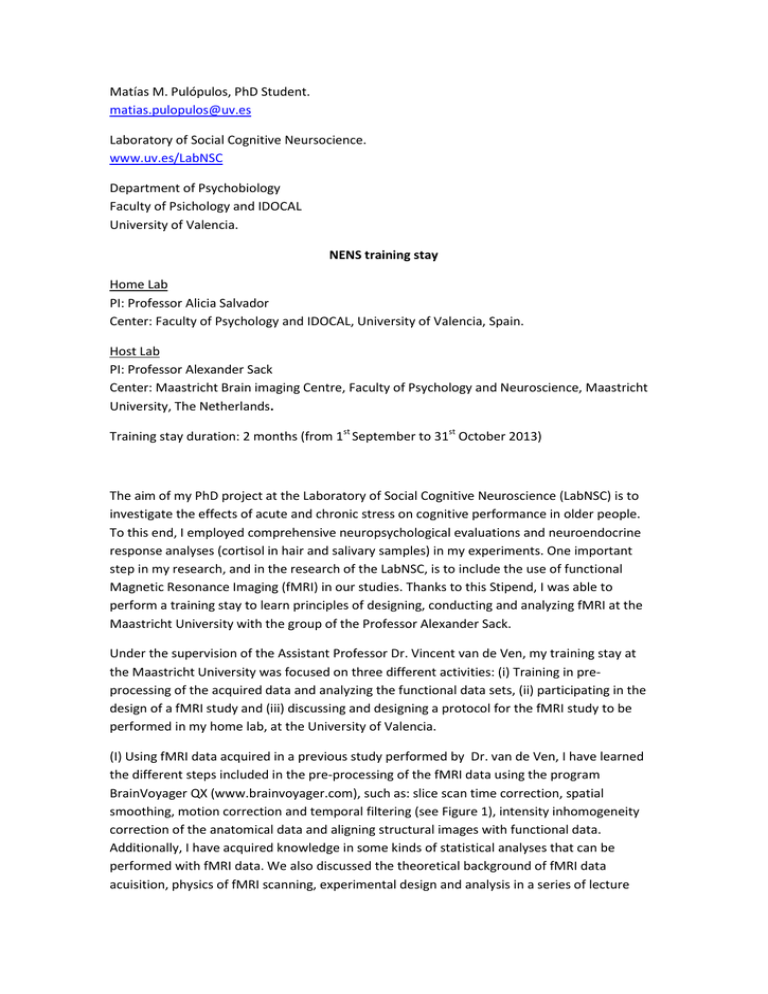
Matías M. Pulópulos, PhD Student. matias.pulopulos@uv.es Laboratory of Social Cognitive Neursocience. www.uv.es/LabNSC Department of Psychobiology Faculty of Psichology and IDOCAL University of Valencia. NENS training stay Home Lab PI: Professor Alicia Salvador Center: Faculty of Psychology and IDOCAL, University of Valencia, Spain. Host Lab PI: Professor Alexander Sack Center: Maastricht Brain imaging Centre, Faculty of Psychology and Neuroscience, Maastricht University, The Netherlands. Training stay duration: 2 months (from 1st September to 31st October 2013) The aim of my PhD project at the Laboratory of Social Cognitive Neuroscience (LabNSC) is to investigate the effects of acute and chronic stress on cognitive performance in older people. To this end, I employed comprehensive neuropsychological evaluations and neuroendocrine response analyses (cortisol in hair and salivary samples) in my experiments. One important step in my research, and in the research of the LabNSC, is to include the use of functional Magnetic Resonance Imaging (fMRI) in our studies. Thanks to this Stipend, I was able to perform a training stay to learn principles of designing, conducting and analyzing fMRI at the Maastricht University with the group of the Professor Alexander Sack. Under the supervision of the Assistant Professor Dr. Vincent van de Ven, my training stay at the Maastricht University was focused on three different activities: (i) Training in preprocessing of the acquired data and analyzing the functional data sets, (ii) participating in the design of a fMRI study and (iii) discussing and designing a protocol for the fMRI study to be performed in my home lab, at the University of Valencia. (I) Using fMRI data acquired in a previous study performed by Dr. van de Ven, I have learned the different steps included in the pre-processing of the fMRI data using the program BrainVoyager QX (www.brainvoyager.com), such as: slice scan time correction, spatial smoothing, motion correction and temporal filtering (see Figure 1), intensity inhomogeneity correction of the anatomical data and aligning structural images with functional data. Additionally, I have acquired knowledge in some kinds of statistical analyses that can be performed with fMRI data. We also discussed the theoretical background of fMRI data acuisition, physics of fMRI scanning, experimental design and analysis in a series of lecture slides provided by Dr. van de Ven (the slides were part of an annual Research Master course on fMRI methods and analysis coordinated and taught by Dr. van de Ven). (ii)During my stay at the Maastricht University, I participated in the design of an experiment focused on visual memory that will be performed by Dr. van de Ven. Together, we presented the idea in a project proposal meeting before Prof. Sack and his team, and we achieved a workable experimental design that included decisions for fMRI data acquisition (temporal resolution, coverage of brain areas, number of trial repetitions) and stimulus selection and preparations. Unfortunately, given an unexpected, but reasonable delay in the start of the experiment, I could not participate in the acquisition phase of the study. In this way, I was able to acquire knowledge on several issues such as the cognitive task to be used, fMRI design (e.g. block vs. event-related), MR sequence parameters, etc., that are important in the design of fMRI studies. The possibility to help Dr. van de Ven and to discuss the protocol with the members of the Professor Sack’s group, gave me an opportunity to observe and learn about critical points and about the possible alternatives to be considered in each step when designing experiments with memory tasks and fMRI. (iii) In the LabNSC, we are interested in investigating age-related differences in stress effects on cognitive performance using fMRI. During my stay at the Maastricht University, I discussed with Dr. van de Ven the different issues to be considered in our study and these discussions resulted in a proposal of a possible protocol to carry out the experiment in my home lab. This study could be part of a collaboration between both research groups. As a complementary formation, this training stay allowed me to learn about several uses of the frequently utilized Matlab and the PsychoPy toolboxes. Additionally, I have familiarized myself with the attractive memory task called pair associated learning task that could be included within the cognitive task used in our laboratory at the University of Valencia. In summary, this stay was a very fruitful experience during which I acquired new important skills. I would like to thank NENS for giving me an opportunity to carry out this training stay at the Maastricht University. It has been a very pleasant and useful work. I would also like to thank Professor Sack for his acceptance in his group and, especially, Dr. van de Ven for his kind help and patience in my formation. I hope that this visit is the start of an ongoing collaboration between me and the Maastricht lab. Figure 1. Functional activity of a particular brain region before (above) and after (below) the pre-processing of the functional data: slice scan time correction, spatial smoothing, motion correction and temporal filtering (taken from the BrainVoyager Getting Started guide).
